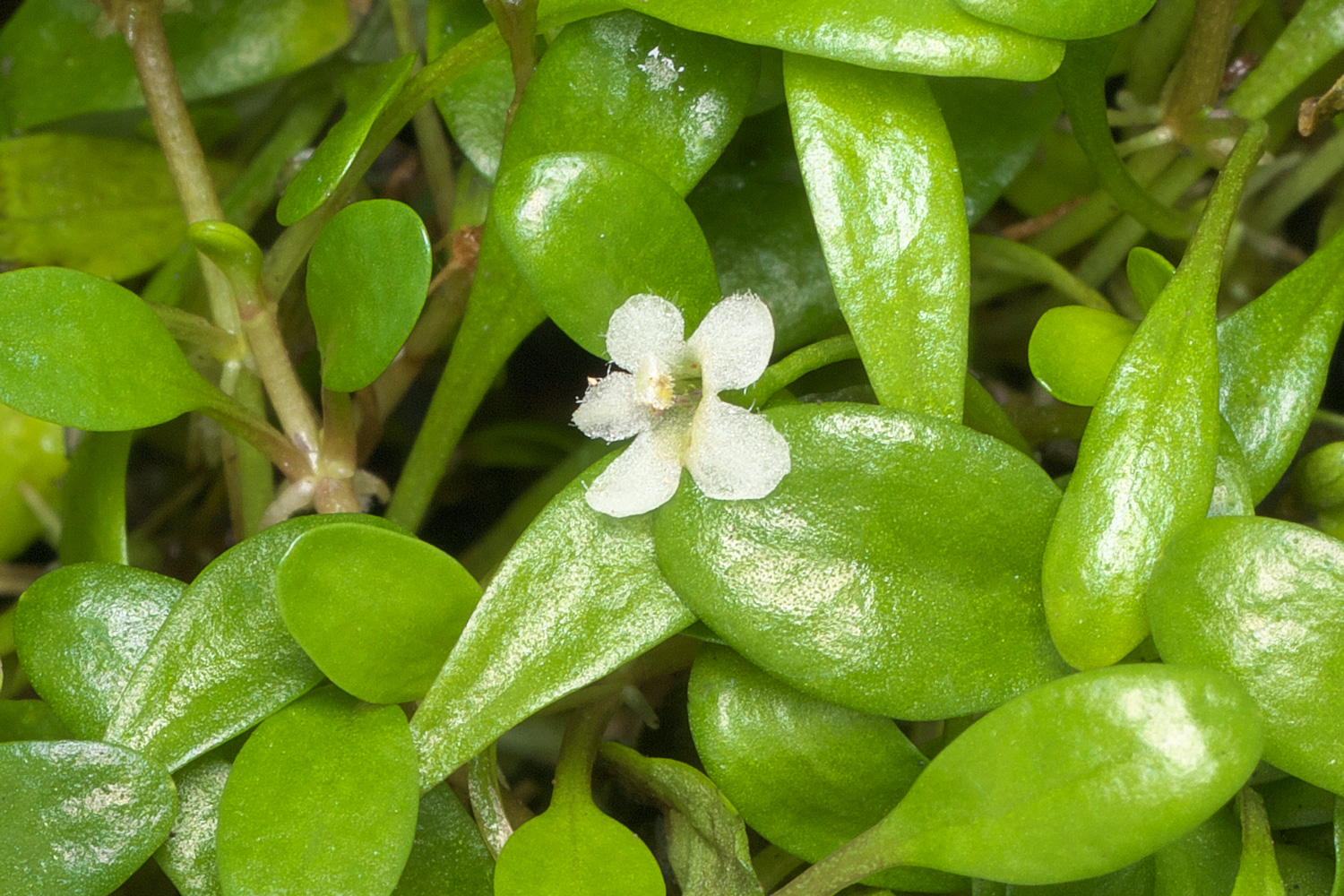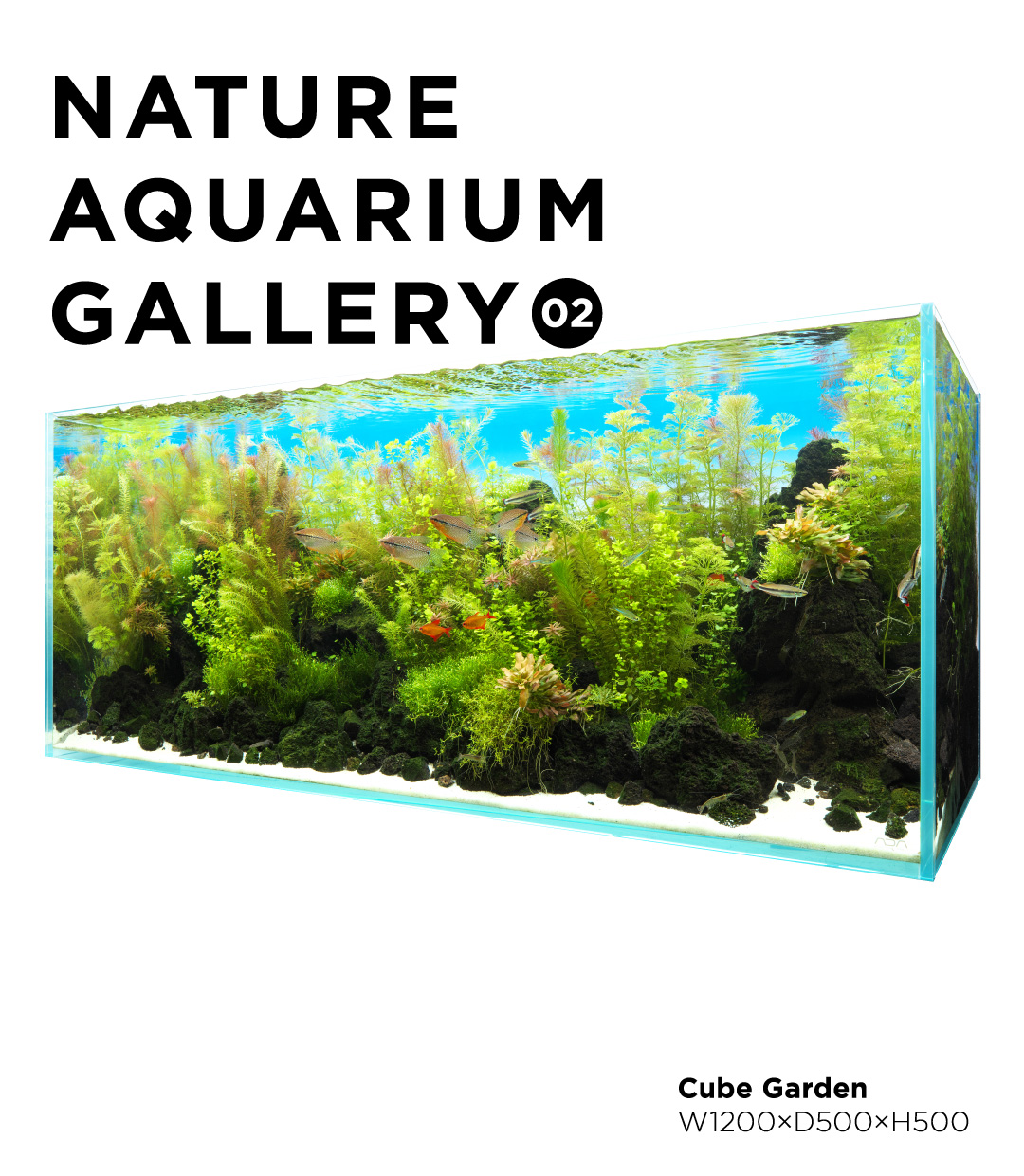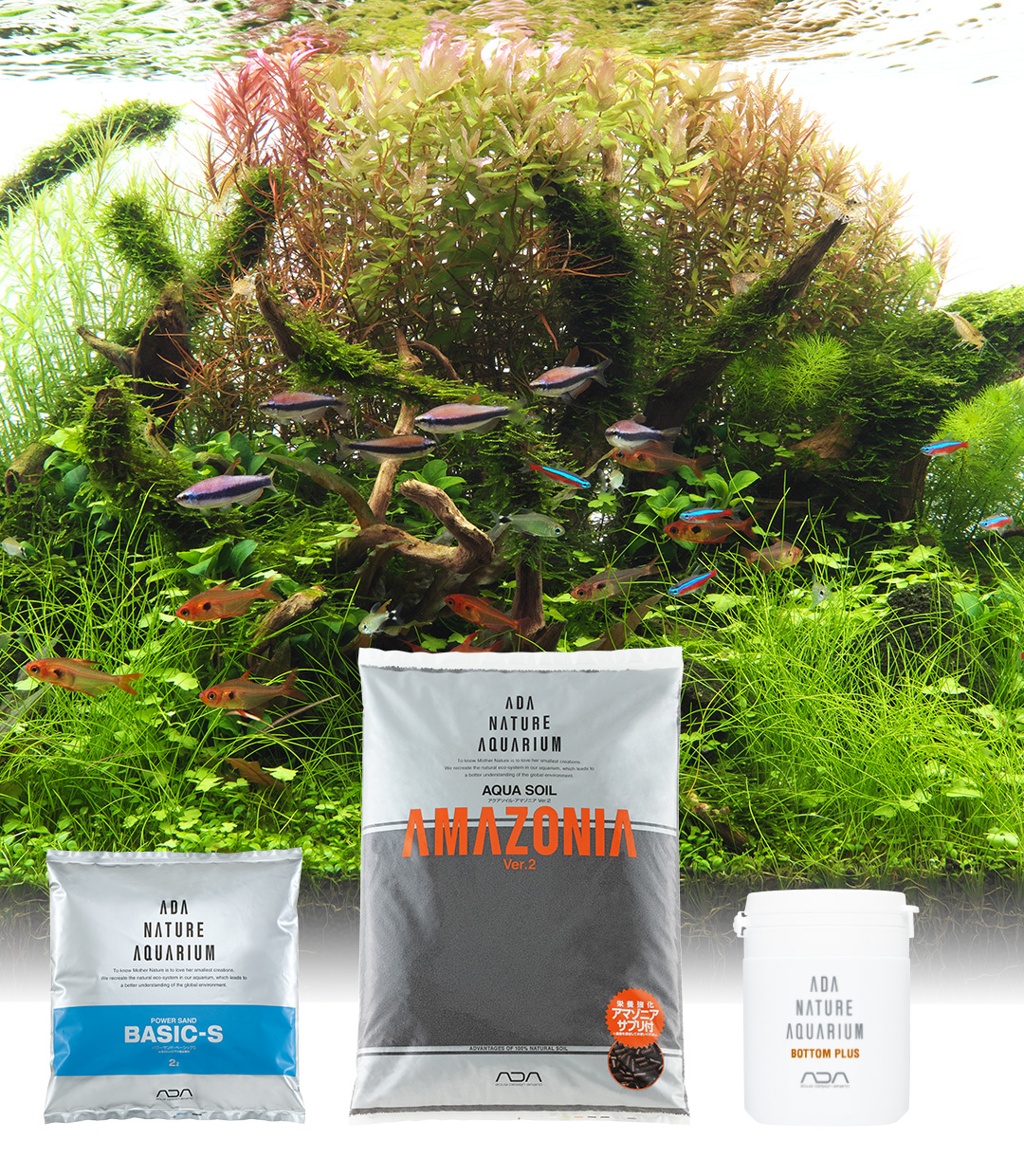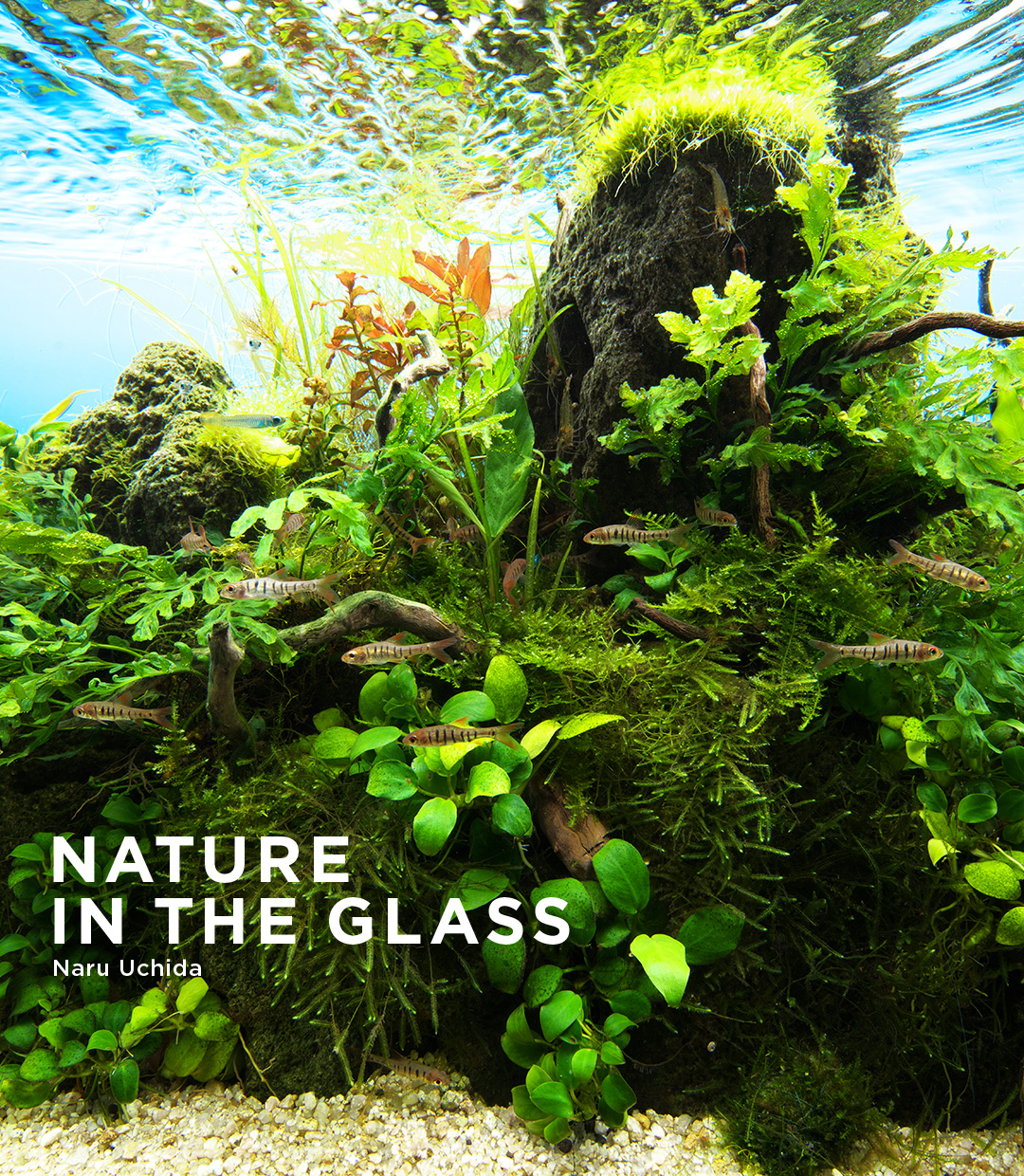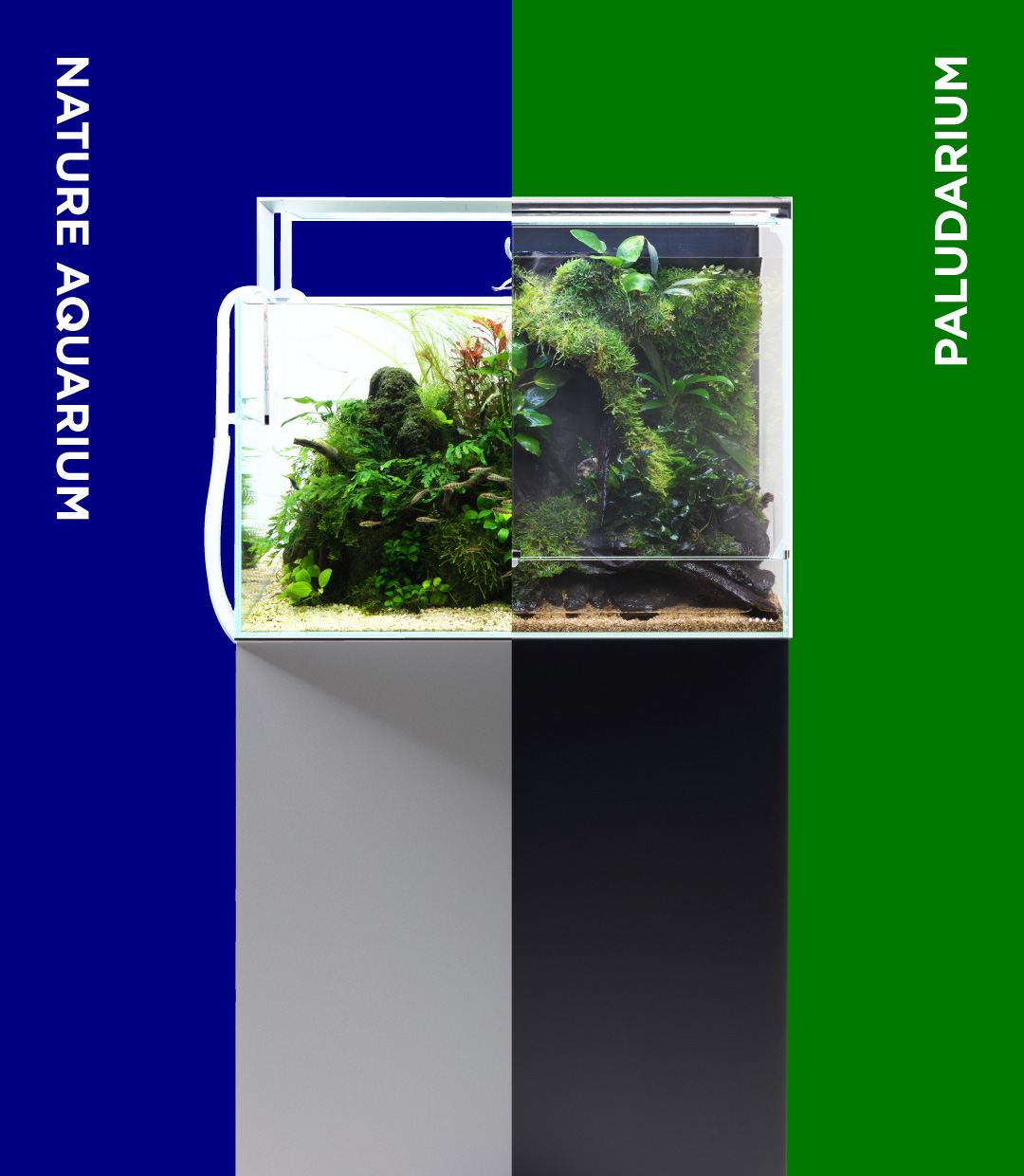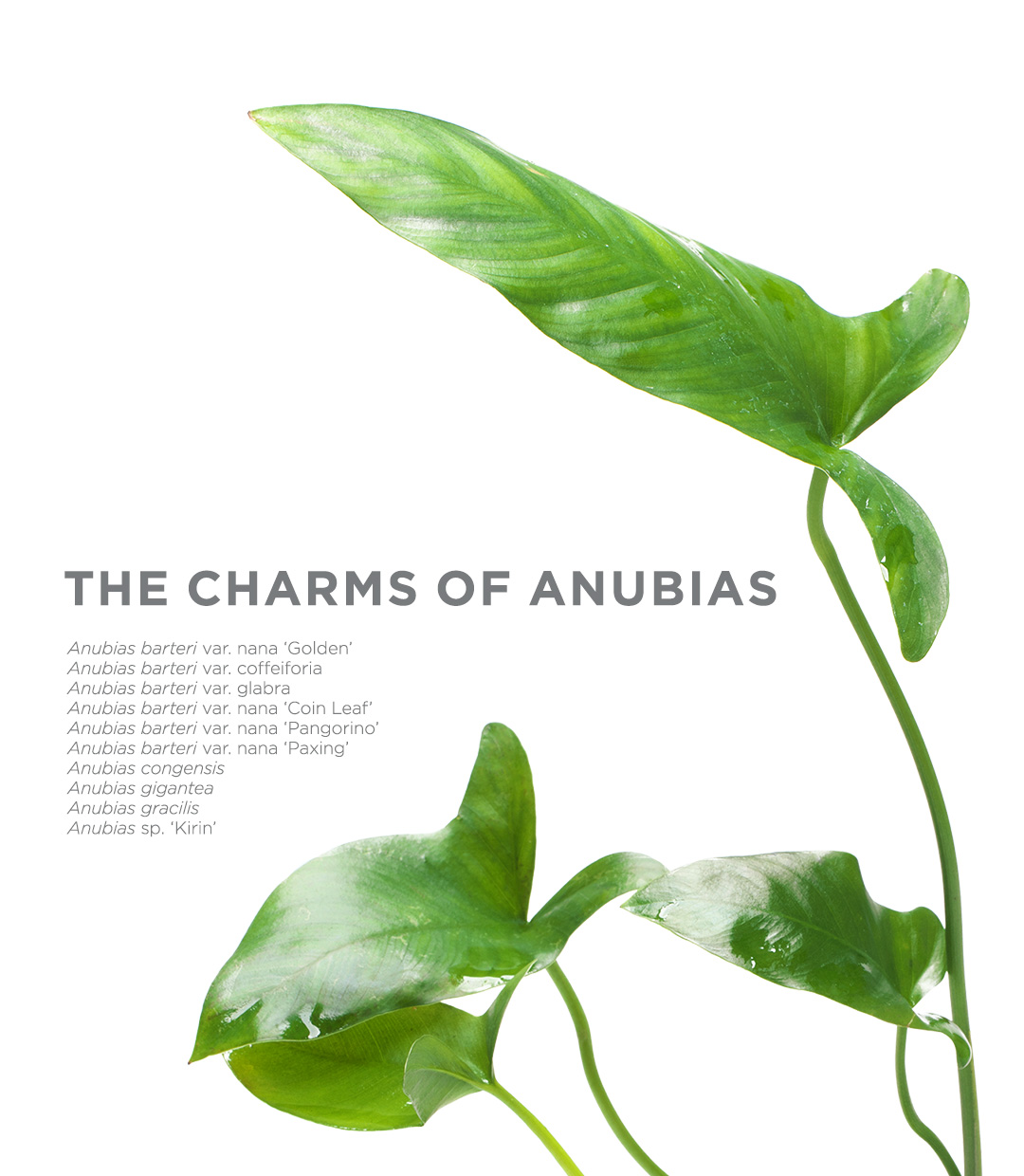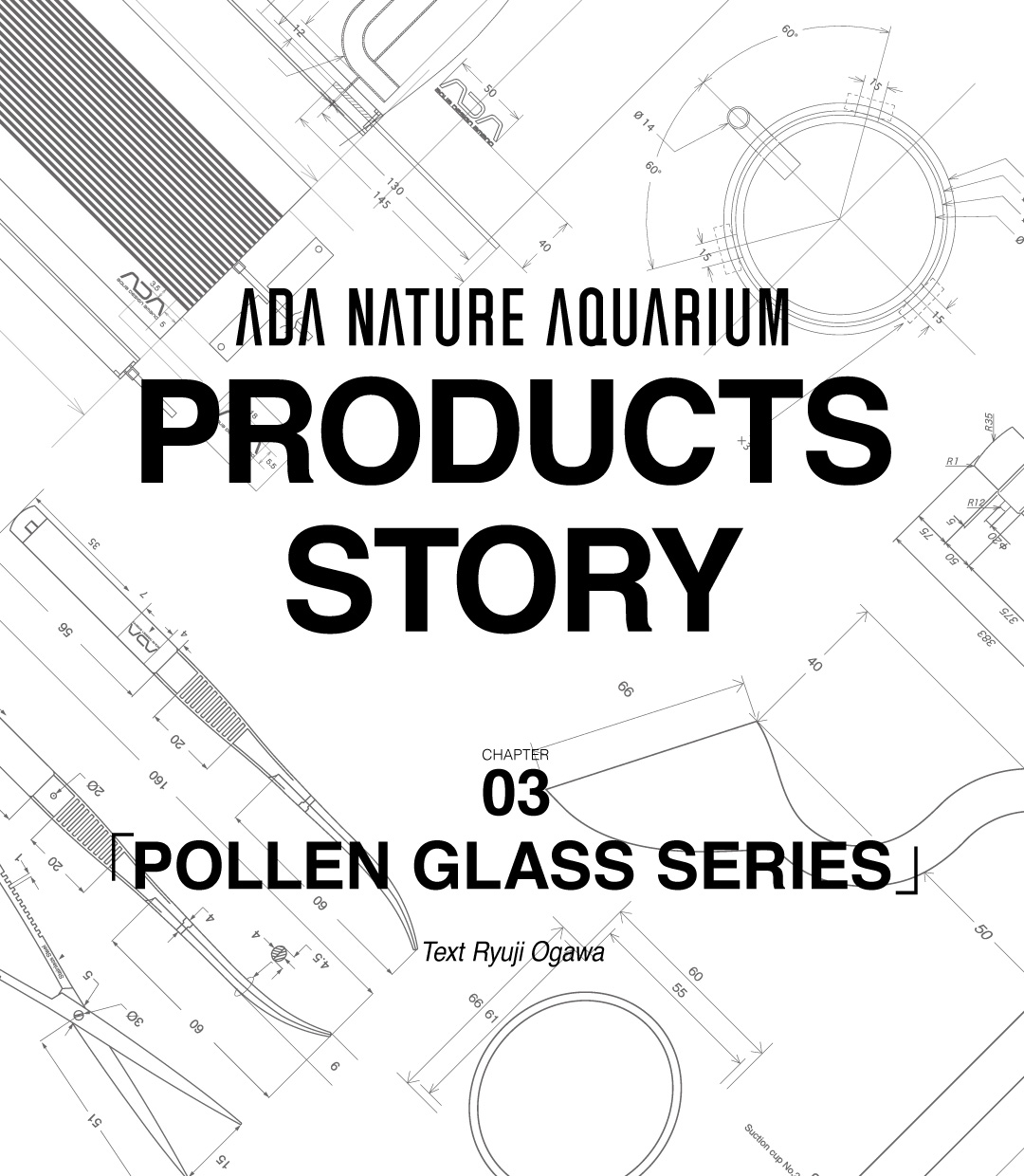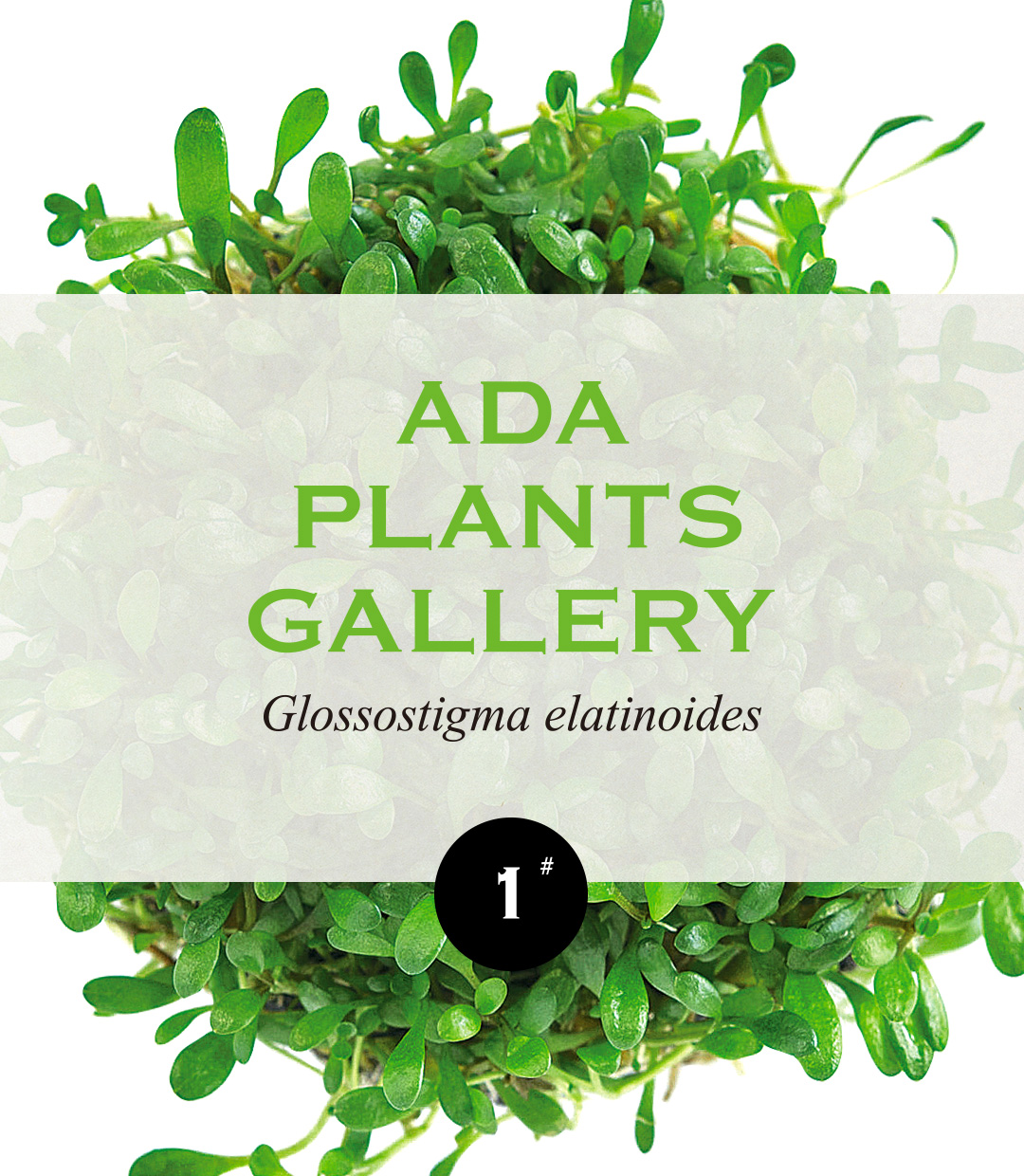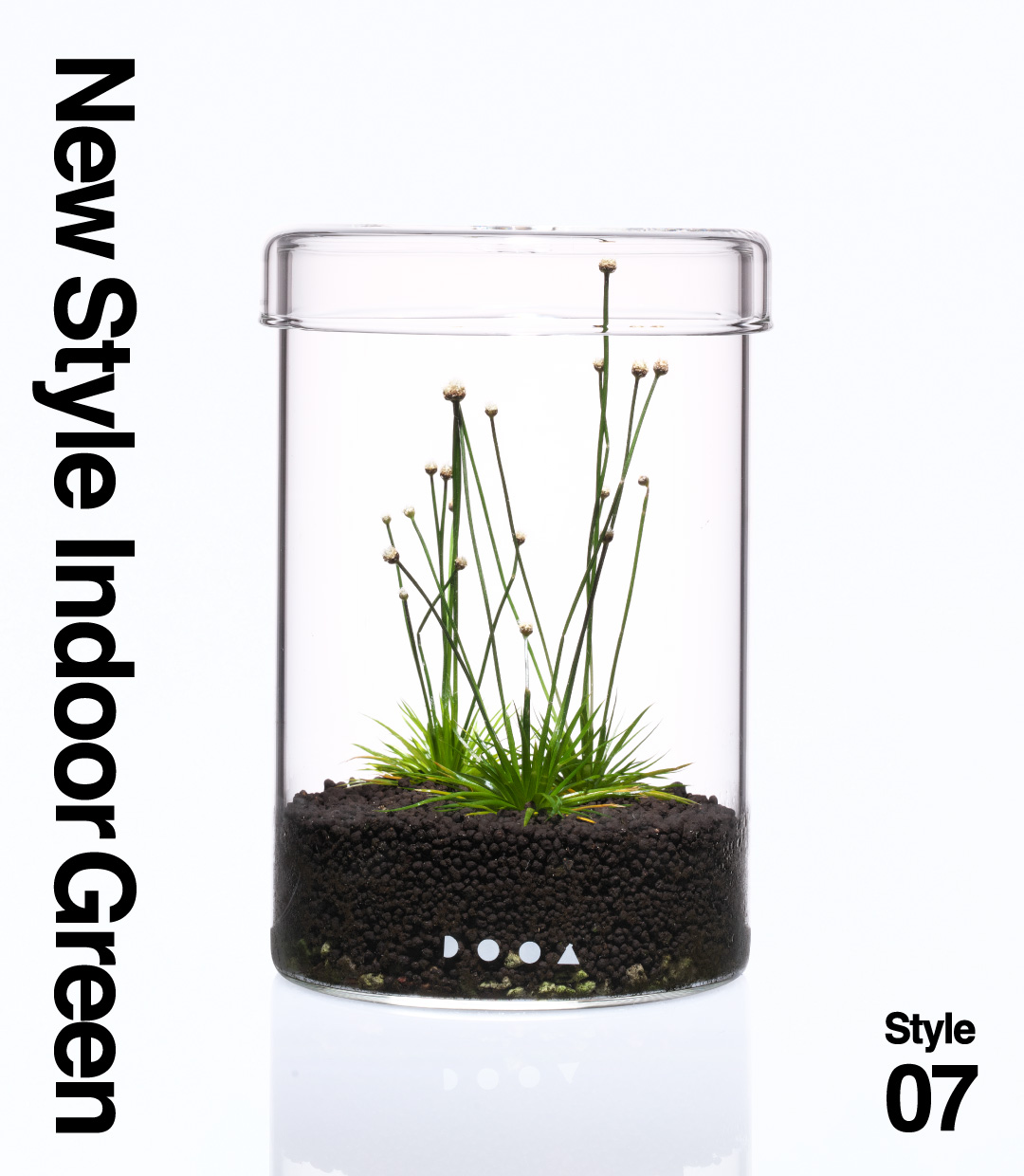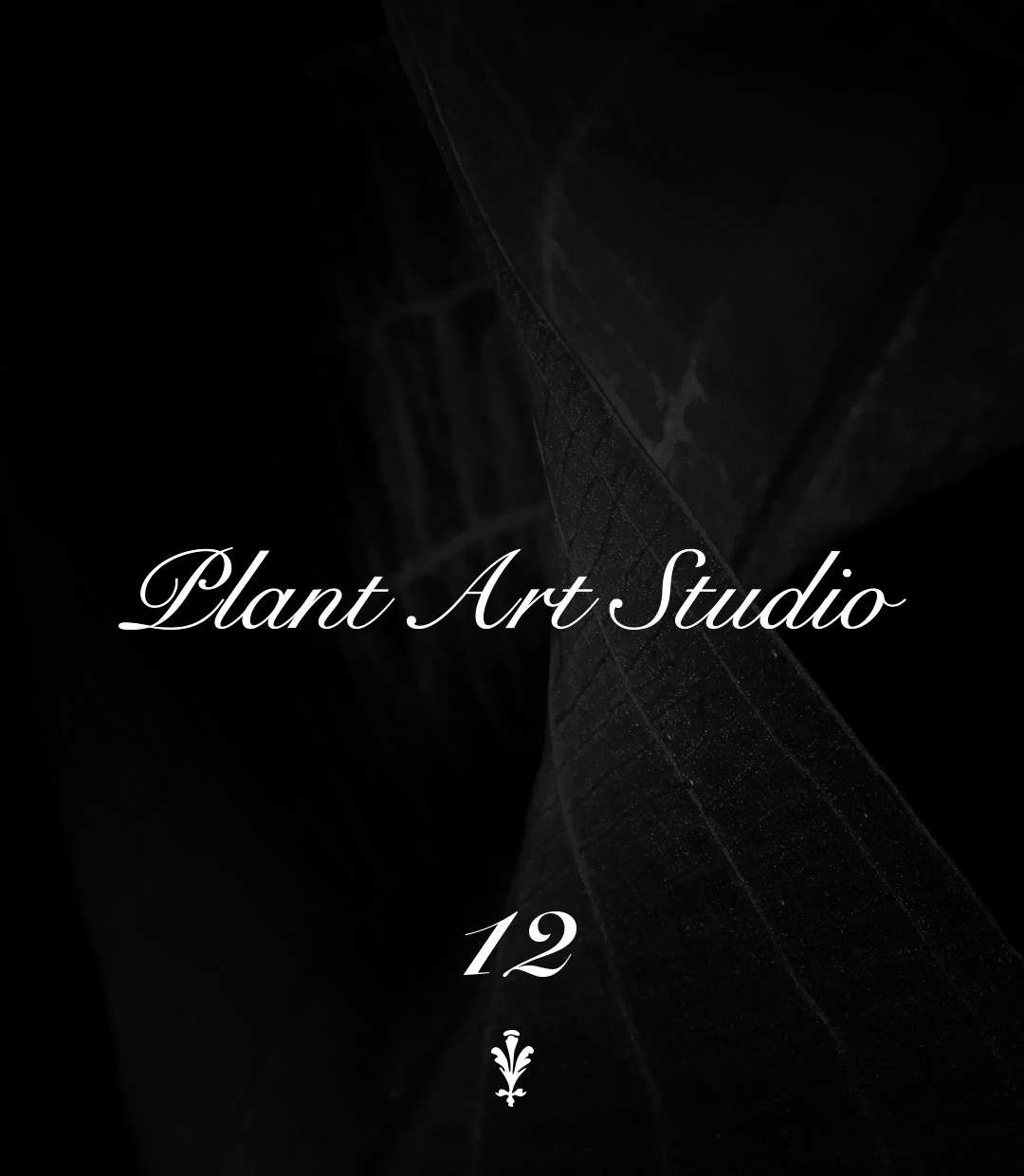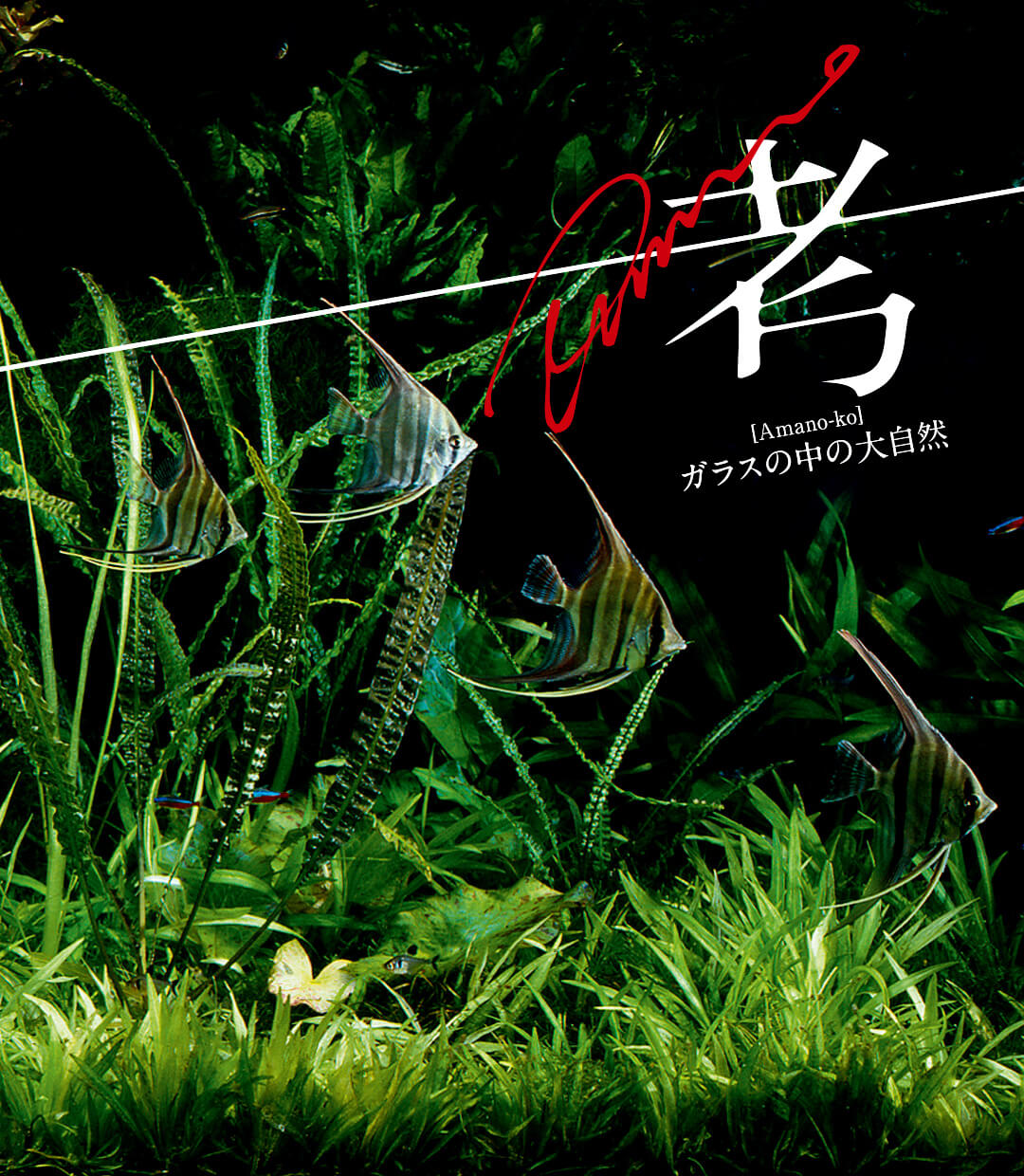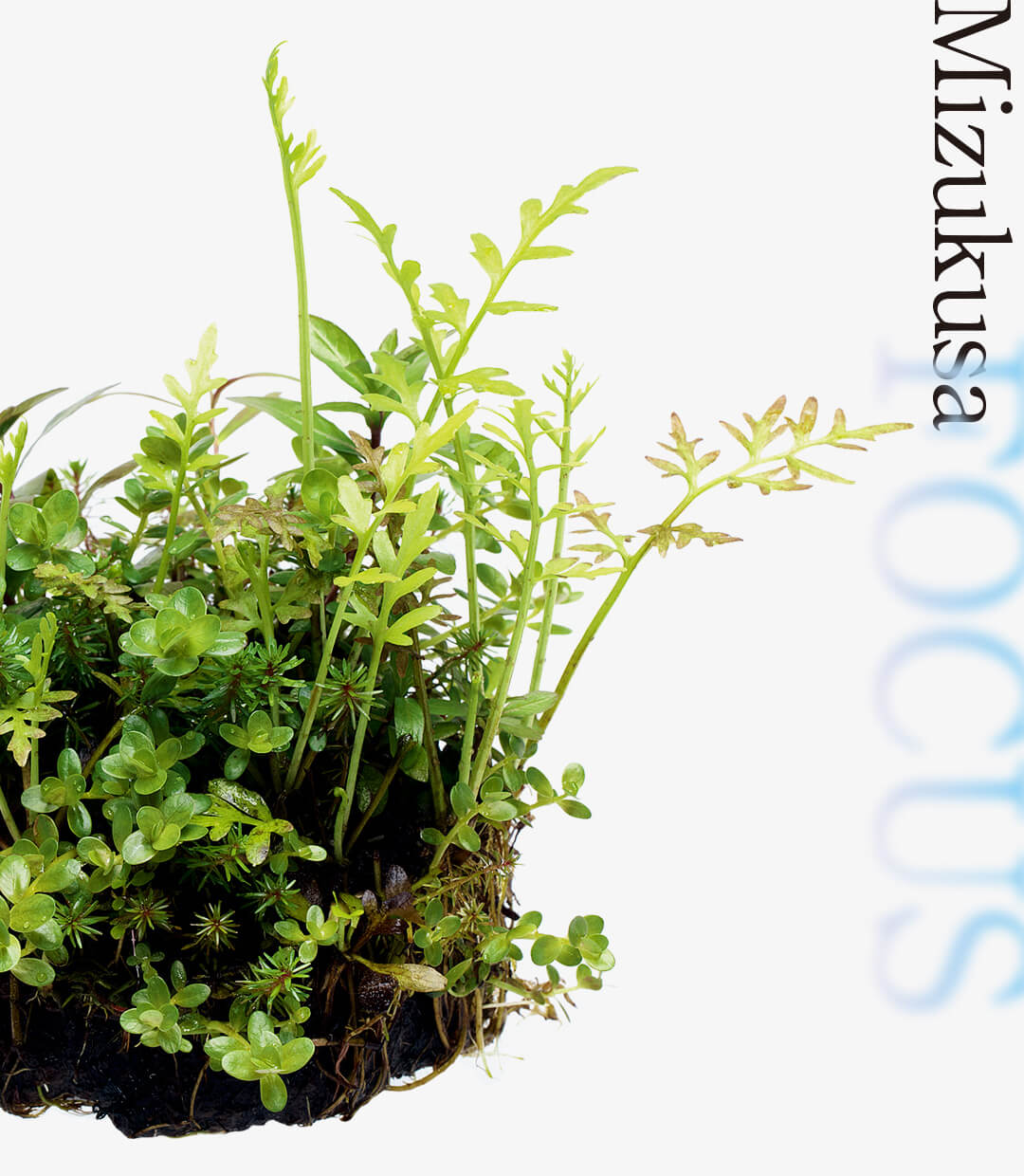ADA PLANTS GALLERY #01 Glossostigma elatinoides
ADA’s Research and Development Department, called the Green Lab, develops a wide variety of greenery products. In this article, we would like to share with you some interesting bits of trivia about the plants produced in the lab, and a part of their true nature we see from time to time.
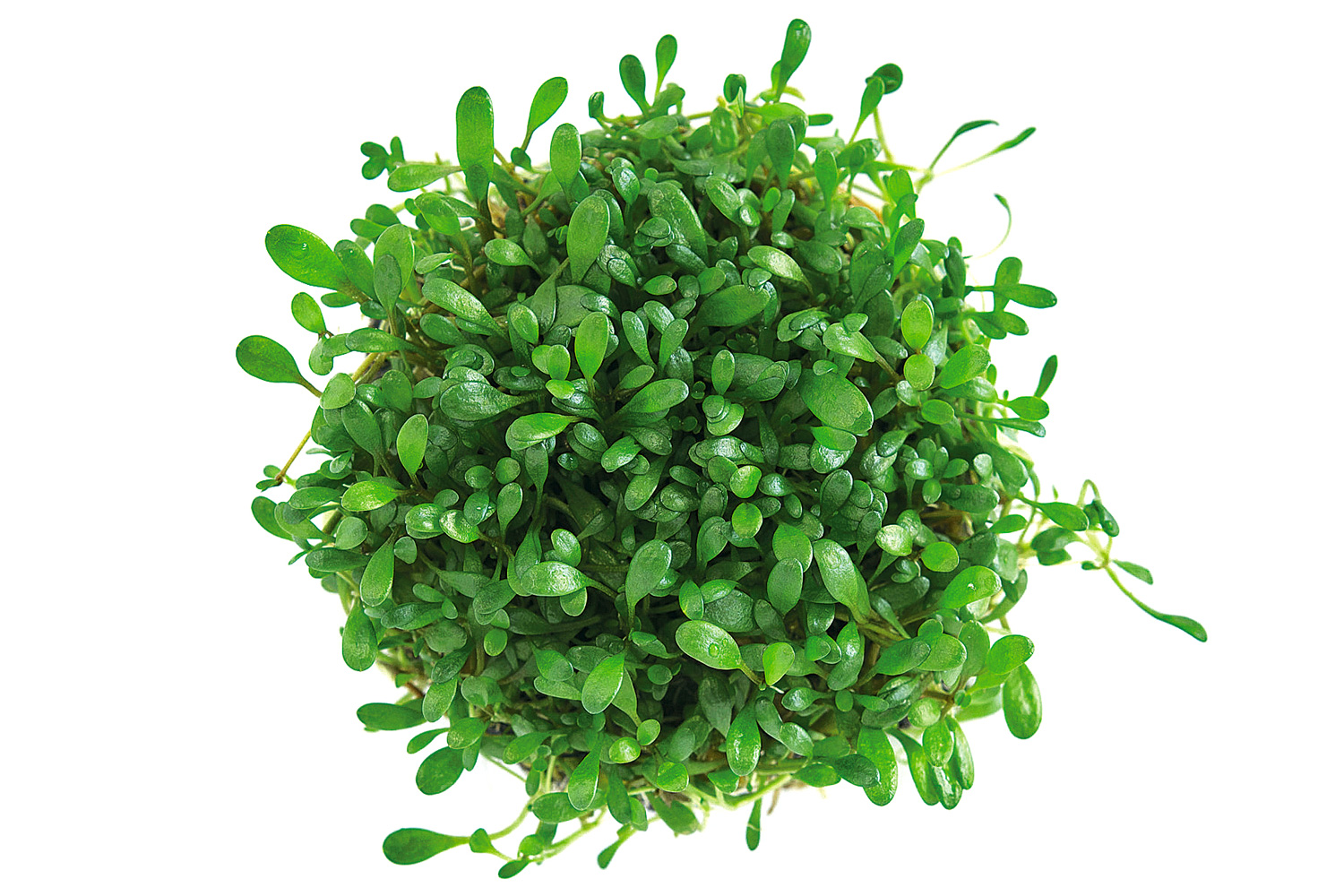
The star plant of Nature Aquarium
Glossostigma elatinoides, with its lovely spoon-shaped leaves, is a popular undergrowth (foreground plant) that is loved by professionals and amateurs alike because it is easy to grow. It is distributed in southeastern Australia, Tasmania and New Zealand, forming colonies in shallow water in rivers and lakes, and wetlands. Its specific epithet means “looking like elatine (the genus Elatine)”. Glossostigma, which is so commonly used nowadays, was widely introduced to the public through Nature Aquarium more than 30 years ago. However, at the time, it was an extremely rare aquatic plant that was difficult to obtain and very expensive.
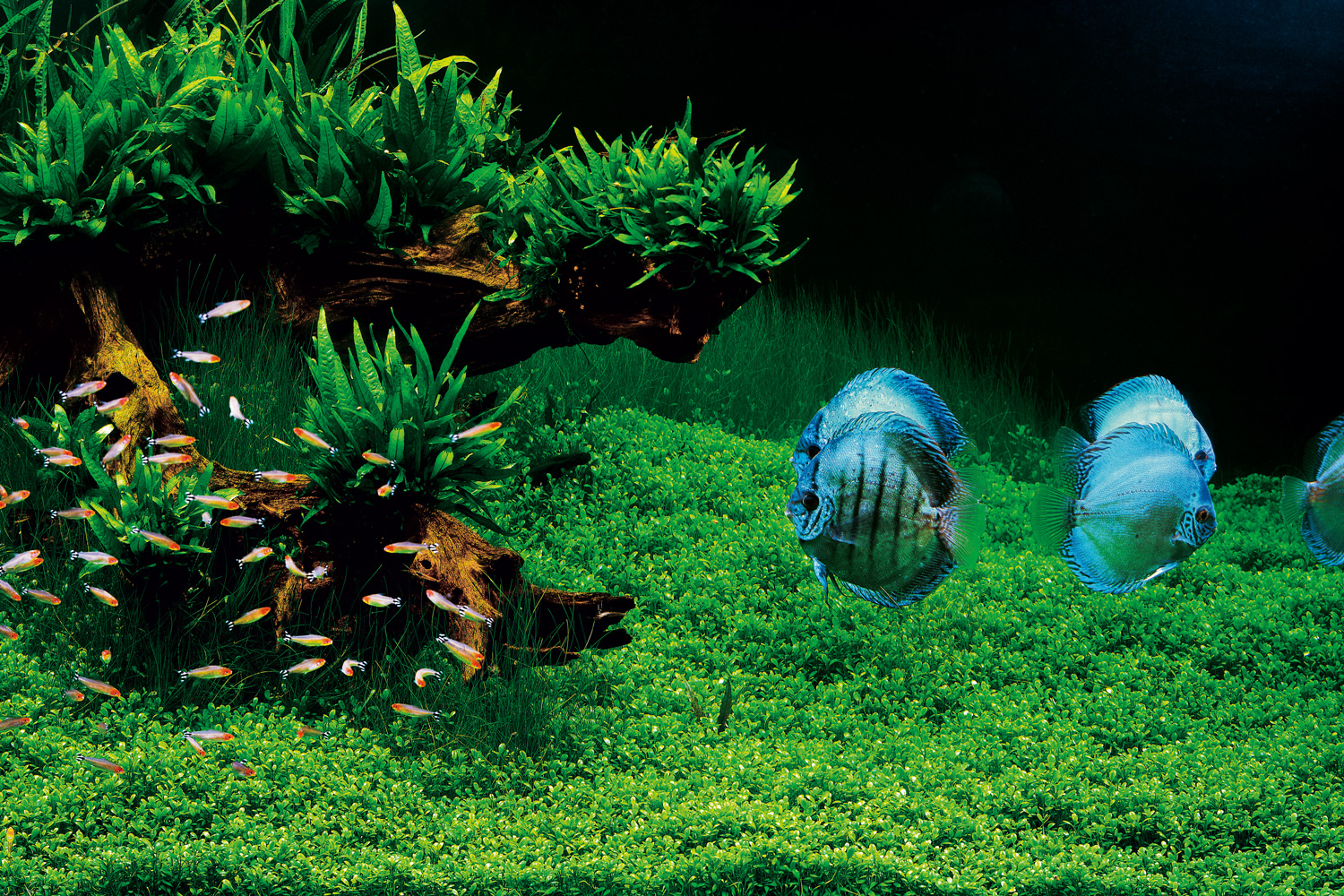
Creation & Photography by Takashi Amano (July, 1992)
Plays its role in any situation
Glossostigma is available in both the BIO Mizukusa no Mori and Wabi-Kusa series. BIO Mizukusa no Mori, which can be planted in small clumps, is suitable for a small tank or intricate layout. In an open space or on a slope of an Iwagumi that is heaped with soil, Wabi-Kusa develops quickly and can help hold the soil in place with its dense planting. Wabi-Kusa blends well with other aquatic plants. For example, a sense of wilderness created by mixing Wabi-Kusa with Echinodorus tenellus gives a more natural impression to the layout. When Riccia is planted randomly, it not only breaks up the monotonous tone, but also creates a fantastic aquascape with oxygen bubbles of different sizes.
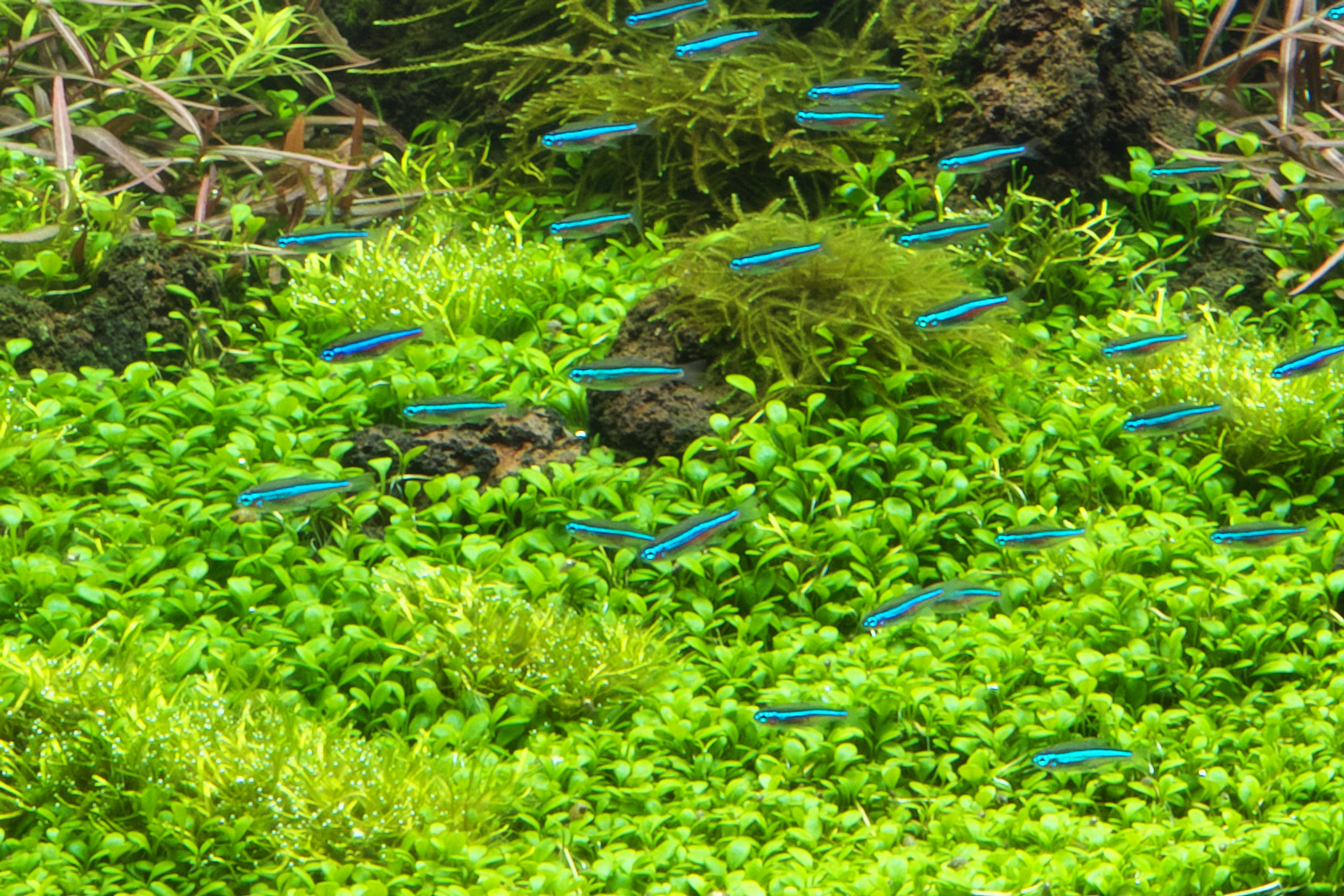
One of the most resilient aquatic stem plants
Very resistant to trimming, Glossostigma develops lateral buds quickly and becomes dense, covering the entire surface. Its potential also can be seen in the trimming pieces: if you float a piece of leaf, petiole, or stem in water, the root will develop in less than five days. This can also be observed when spreading the pieces over wet Aqua Soil in a Neo Glass Air tank or Glass Pot SHIZUKU. You can turn it into an instant paludarium by placing a simple composition in it.
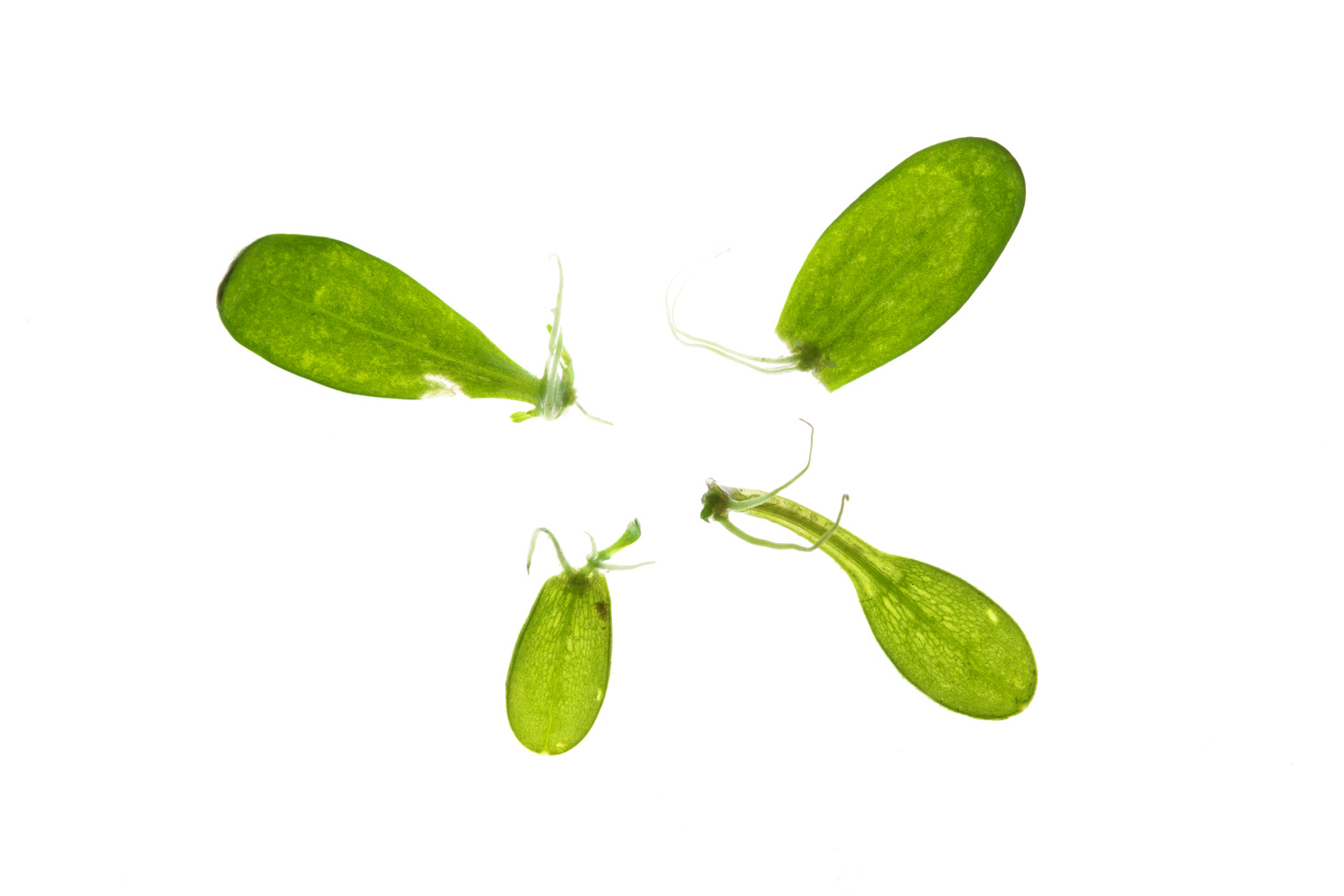
The pretty flowers are also worth a look
There are currently six accepted species of Glossostigma in the family Phrymaceae (formerly assigned to the family Scrophulariaceae), all of which are found in Australia and New Zealand. The only species, Glossostigma diandrum, which has slim leaves that look like Japanese tea spoons, can also be spotted in Vietnam, In-dia and West Africa. Generally, all species bloom white flowers all at once, but some of them turn a light pink color. Glossostigma elatinoides featured in this ar-ticle also has lovely white flowers. They look like small plum flowers, with many silky soft hair extending from the petals.
